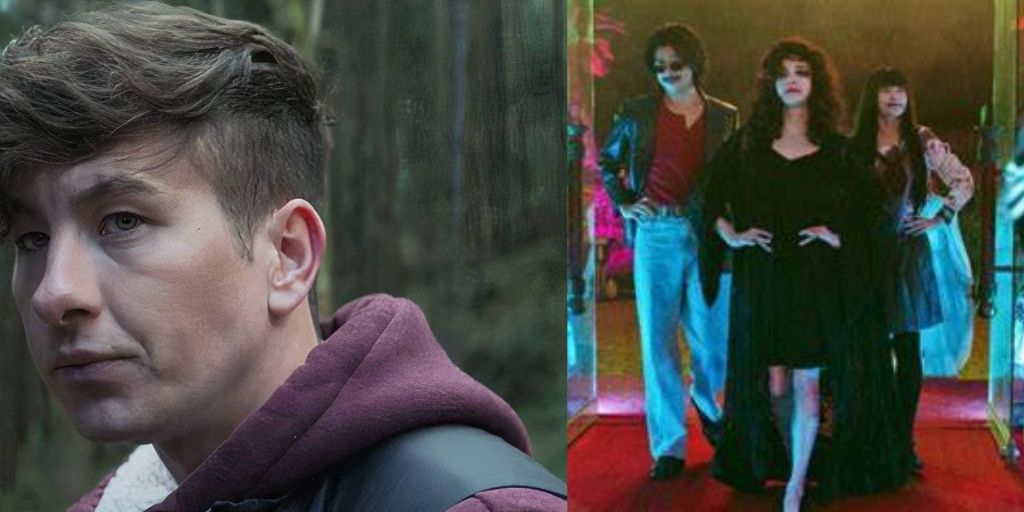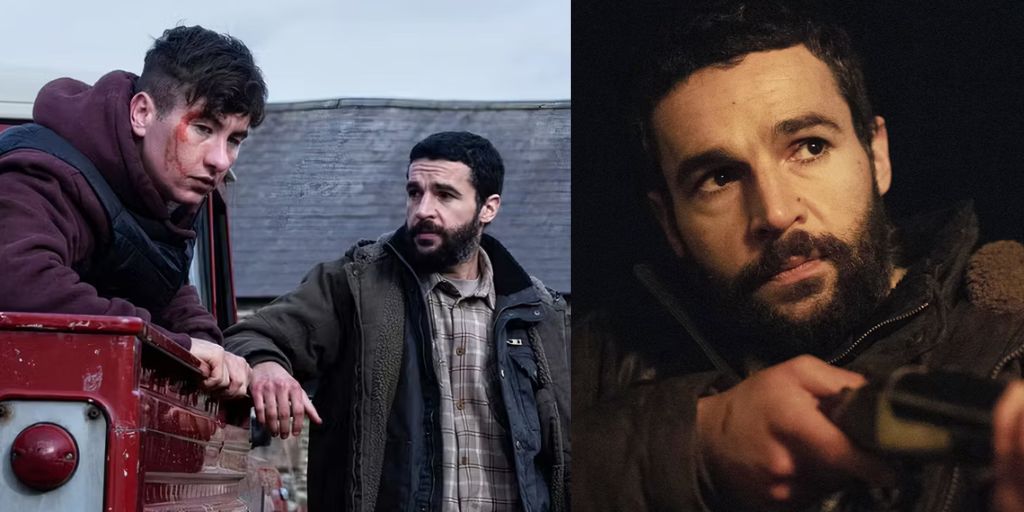Bring Them Down is the first film directed by Christopher Andrews. It starts with a shocking scene that shows brutal violence, which symbolizes the rest of the film. Michael (played by Christopher Abbott, though his face is not shown) is driving on an Irish road.
His mother, Peggy (Susan Lynch), sits in the passenger seat, while his girlfriend, Caroline (Grace Daly), is in the back seat.
Everything seems normal until Peggy shares her news: she is leaving Michael’s father, Ray (Colm Meaney). After meeting Ray, it becomes clear why she wants to leave.
She tells Michael that Ray terrifies her. Instead of responding to his mother’s news, Michael presses the gas pedal.
He ignores the frantic pleas from Peggy and Caroline until the car crashes. This moment shows how anger drives him without any thought for the consequences.
A Cycle of Anger and Revenge
Bring Them Down is filled with moments where anger takes control. Michael’s actions in the opening scene create a chain reaction of revenge, anger, and grief for those around him. Poor decisions lead to more poor decisions.
The film shows that fury and vengeance are complicated and based on feelings, not clear thinking. Andrews, who wrote the film with Jonathan Hourigan, focuses on this kind of angry revenge. However, it reminds us that revenge often feels good at the moment but leaves you feeling empty in the long run.
The Impact of the Accident
After the car crash, Bring Them Down jumps ahead in time to show how the event affects the community and people close to Michael.
Caroline, now played by Nora-Jane Noone, carries a visible scar on her face. She has started a family with her sheep farmer husband, Gary (Paul Ready), and their son, Jack (Barry Keoghan).
While Caroline seems friendly with Michael, her family holds resentment toward him. Michael runs the sheep farm next to Caroline’s family farm, which brings them closer together.
Michael’s father, Ray, is now mostly unable to move from his chair, leaving bottles of his urine for Michael to clean up at the end of the day. Ray often yells at Michael and mourns his wife, not knowing how Peggy died.

Michael spends most of his days alone, taking care of the sheep. However, one day, Gary and Jack call him and Ray to say that two of their rams have ended up on their property and are now dead.
This news brings long-hidden anger between the two families back to the surface, as both want to take revenge for their losses.
Strong Performances Drive the Story
Bring Them Down mainly works because of its two main characters, even though they are somewhat miscast. Abbott plays Michael as a quietly intimidating character who has always held onto his rage. He portrays this type of character well, making his outbursts more impactful.
Keoghan is also skilled at playing unsettling characters, making him an unpredictable and somewhat foolish person. Putting these two against each other creates a powerful conflict since both characters are volatile and erratic.
However, the film tries to make us believe that Abbott’s Michael could be Jack’s father, showing what he could have had if he had not ruined his relationship with Caroline. The small age difference between the two actors makes this connection less clear.
Andrews also uses violence sparingly but effectively. When violence occurs, it shocks the audience, similar to how Jeremy Saulnier uses brutality in films like Blue Ruin or Green Room.
The violence is never neat, serving as another example of acting without thinking about the consequences.
Andrews builds up to these moments but still surprises us with horrific acts against the backdrop of beautiful scenery captured by cinematographer Nick Cooke.
Staying Within One Emotion
Despite its effective violence and strong performances, Bring Them Down does not go beyond being a standard revenge thriller.
There are smart choices, such as shifting from Michael’s perspective to Jack’s perspective later in the film, which shows a different side of the story.
However, it does not add up to much full. While it is exciting to watch the conflict between the two families, the film does not reach greatness, even though it hints at something deeper.
Like its characters, Bring Them Down keeps moving forward, introducing new challenges and chances to go further into this dark story. However, it lacks a clear purpose or satisfying conclusion.
Bring Them Down stays focused on pain and the grief that comes with it, creating an unavoidable sense of misery.
Andrews and Hourigan’s script remains in this sorrow without seeking to show beyond this emotion, which weighs down both the characters and the audience.

The film successfully showcases strong performances from Abbott, Keoghan, and Meaney, as well as Andrews’ ability to build tension and create shocking moments of violence.
For Andrews, Bring Them Down is a capable and interesting debut, but it needs more depth than this revenge story can provide.
“Bring Them Down,” directed by Christopher Andrews, shows themes of anger and revenge after a tragic car accident involving Michael and his family.
The film reveals how the event impacts the characters over time, particularly Caroline, who suffers lasting effects. Strong performances highlight the emotional weight, but the film struggles to transcend its standard revenge thriller format.





